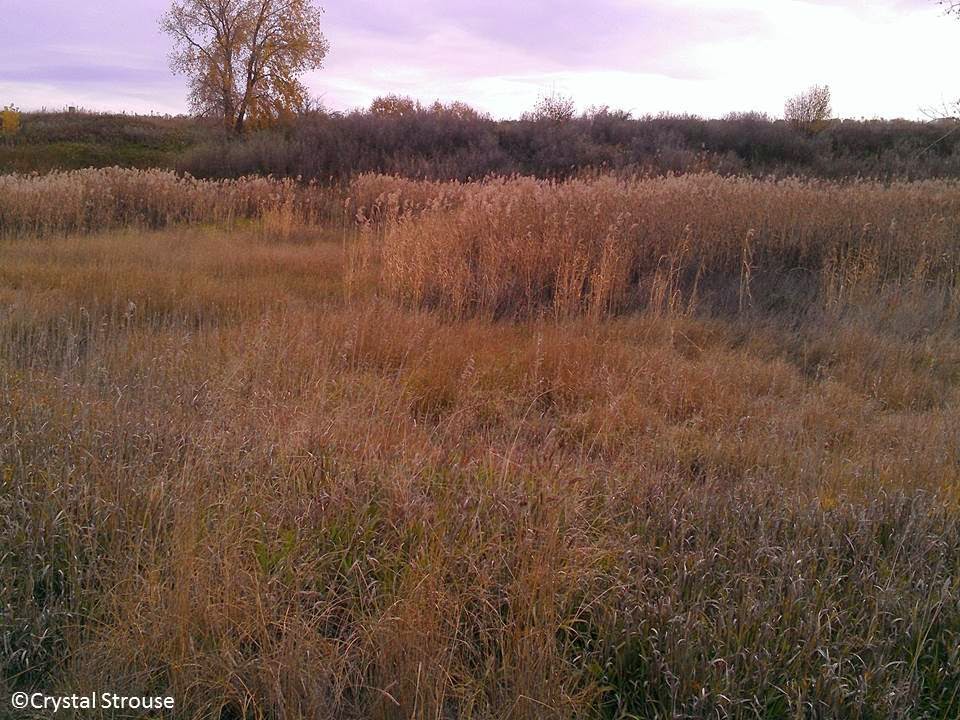If you work in wetlands, you have no doubt marveled at the spectacular common reed (Phragmites australis). This grass can tower over a field biologist, growing up to 15 ft tall. It is frequently found along streambanks and ditches in Colorado. Often considered an aggressive non-native, recent development of molecular markers has led to the discovery that both native and introduced genotypes exist in North America. This evidence suggests that land managers should think twice before treating common reed like an invasive weed.
 |
| Common reed (Phragmites australis) grows in a tall stand in wetlands along the Arkansas River. |
It can be difficult to determine native vs. introduced Phragmites using morphological characters. Luckily, Dr. Bernd Blossey has created a handy guide to help distinguish between them. If looking at this table makes you dizzy, the website also offers a free diagnostic service. Send them your common reed specimen, and they will key it out for you! Crystal Strouse, Fort Collins Natural Areas botanist, recently suspected that a population of Phragmites at Running Deer Natural Area was native. After sending material to Bernd Blossey, it was confirmed that the Running Deer population belongs to the native genotype of common reed. At CNHP, we plan on making more collections of this species during the 2015 field season to help determine how common the native genotype is in Colorado.
 |
| A stand of common reed (Phragmites australis) at Running Deer Natural Area was identified as the native genotype. |




